St. George’s Cathedral Timisoara – Summary
The St. George’s Roman Catholic Cathedral (Catedrala Sfântul Gheorghe) is an early 18th-century Baroque architectural style Catholic church located in the historic Union Square (Piața Unirii) of Timisoara, Romania. The cathedral, which is dedicated to Saint George, is also referred to as the Roman Catholic Dome (Domul Romano Catolic). The building is designated a Historical Romanian Monument under Romania’s classification.
The cathedral is considered to be the most unitary and representative Baroque building in the city Timisoara. The double cross design of the church’s sanctuary, as well as the double cross towers of its exterior, serve the symbolic role of protecting Christianity from Ottoman imperialism. In 1756 the Roman Catholic Dome was designated by Empress Maria Theresa as the first church of the city.
Although the St. George’s Cathedral is primarily known for its religious significance, it also served other purposes throughout its history. During the Austro-Turkish War of 1788-1790, the cathedral was used as a warehouse for the storage of hundreds of salt bags. When the Wallachian Revolution of 1848 broke out, the church was used as a shelter for 107 days to house devotees from the outside conflict.
The St. George’s Cathedral was inaugurated in 1754 by Bishop Engl von Wagrain, when it was only half finished. Today the church holds liturgy services in Hungarian, German, and Romanian languages. The cathedral also periodically hosts organ concerts which are highly attended by the public. From 2000 to 2004 the building underwent heavy repairs, the upgrades to the church specifically preserved its signature Baroque style.
St. George’s Cathedral Timisoara – Table of Contents
- St. George’s Cathedral Timisoara – History
- St. George’s Cathedral Timisoara – Architecture
- St. George’s Cathedral Timisoara – Video
- St. George’s Cathedral Timisoara – Visitor Info
- St. George’s Cathedral Timisoara – Resources
St. George’s Cathedral Timisoara – History
The St. George’s Roman Catholic Cathedral was built at the request of the Holy Roman Emperor Charles VI who wanted to move the Roman Catholic diocesan headquarters from Szeged, Hungary to Timisoara, Romania. Prior to being headquartered in Szeged, the residence of the Roman Catholic bishops, founded and sanctified in 1030 by Gerard Sagredo, was in the Timiș County, Commune of Cenad. The Roman Catholic leadership in Cenad oversaw the Catholic faith throughout the region up until around the year 1552 when the Ottoman’s conquered the land.
The Islamic Ottoman empire rule in Banat, of over 160 years, saw the gradual disappearance of the Roman Catholic Episcopate from the region. The Turkish Ottomans repeatedly plundered and destroyed cities, towns, castles, monasteries, and churches, throughout the area. The Ottomans laid waste to the land, murdering or enslaving any inhabitants they came across. The Ottoman’s reign of terror and destruction ended around 1718 when the Habsburg Empire defeated them in the Austro-Turkish War (1716-1718) and took control of the land.
The taking of Banat by the Habsburg Empire saw the reemergence of the Roman Catholic religion in modern-day Timisoara, and its surrounding cities. In 1733 the seat of the Roman-Catholic Episcopate was officially relocated to Timisoara. While the city was undergoing redevelopment from the devastation left by the Ottomans, it was decided by the Bishop Adalbert von Falkenstein and Count Claudius Florimund (military commander of Banat) to erect the St. George’s Cathedral in the city’s newly developed Dome Square (Union Square).
St. George’s Cathedral Timisoara – Architecture
The St. George’s Cathedral was designed by multiple architects and was constructed during two different stages in time. The first construction stage took place from 1736 to 1751. Work on the project was then delayed because of economic and social hardships, as well as because of military threats occurring in Banat. The second stage of the cathedral’s development took place from 1755 to 1774. All in total it took 34 years of construction before the church was fully completed.
There is a certain level of uncertainty over who was the original architect of the St. George’s Cathedral. Historians initially believed the cathedral’s architect was the famous and highly renowned Austrian architect Johann Bernhard Fischer von Erlach. Other scholars believed the plans for the church were created by Eralch’s son, Joseph Emanuel Fischer von Erlach because many elements of the church incorporate designs commonly used by the latter.
However, a document that was discovered in the 18th century further adds mystery to who the original architect of the church was. The historical document, titled “Wienerische Diarium,” which documents the laying of the church’s foundation stone in 1736 by Bishop Adalbert de Falkenstein, claims the cathedral was designed by H. Joh. Jacob Schelblauer, the Technical Counselor of Vienna, and approved by his superiors at the Aulic Building Bureau.
Despite who the true founding architect of the St. George’s Cathedral really was, the developers who went on to finish the church’s construction are commonly known. The church utilized four different builders during different time periods, all succeeding each other. From 1736 -1750 development was done by Kaspar Dissel, 1750-1753 by Johann Lechner, in 1756 there was coordinated development by Alexander Steinlein and Johann Kostka, the project was finished in later years by Philipp Maurer.
Church Exterior
The Baroque style St. George’s Cathedral has the shape of a double cross. The length of the cathedral measures 55, the width of 22 m, the inner height of the nave is 16 m and the dual towers are 35 m. The church’s foundation was laid on, what was at the time, a marshy wetland in Union Square. The foundation was constructed out of wooden pillars that were laid horizontally to form a rectangle and then reinforced by solid steel beams that support the building.
The church is primarily constructed out of brick, stone, and contains many stucco decorations and ornaments. The church’s massive front doors are made out of oak and decorated in nickel. The two clock towers are adorned with golden crosses and house large bells that were cast by Josef Steinstock, of the Buda Commune. The building’s façade contains 9 windows on the lower level, 3 on the upper towers, and about a dozen total around the building’s sides.
Church Interior
The rich Baroque and Rococo (Late Baroque) interior of the St. George’s Cathedral in Timisoara is one of the most astonishing and beautiful church interiors in the whole country. It contains magnificently painted works of art, striking bronze and stone sculptures, highly intricate ceiling patterns, dazzling crystal chandeliers, and stunning marble walls, floors, and columns. The interiors somber holly ambiance is breathtaking to behold and experience. The works inside the church were created by some of the most talented master painters and craftsmen of the era.
Inside the cathedral, there are a total of 9 alters that were created by the Viennese sculpting specialist Johan Müller. At the center alter this is an incredible painting of St. George, the patron of the church, slaying a serpent dragon. The painting was done by the world-class painter and director of the Academy Vienna Michelangelo Unterberger. The center altar also contains two gold-plated statues that were sculpted by the Viennese sculptor Johann Joseph Rössler. The statues are of Roman Catholic Archbishop Charles Borromeo, and of Saint Thérèse of Lisieux.
The magnificently massive organ found inside the cathedral is the church’s third reiteration of the instrument. The original organ was a small version that was discovered to have been in the church following the finding of its manual during a church inventory in 1751. The second organ was a beautifully ornamented authentic Baroque style organ that was added to the church in 1767. In 1908 the organ specialist from Timisoara, Carl Leopold Wegenstein, created the current masterfully crafted gorgeous organ found inside today.
St. George’s Cathedral Timisoara – Video
Coming Soon
St. George’s Cathedral Timisoara – Visitor Info
Location
The St. George’s Cathedral is located in Union Square at the address: Piața Unirii 12, Timișoara
Visitation
The cathedral is open for visitation year-round outside of weekend church service hours. Tourists are allowed to photograph the exterior and visit the building’s interior. Taking photos inside is restricted without permission. If you ask the door guard if you can take a picture or two you might be granted the right to do so.

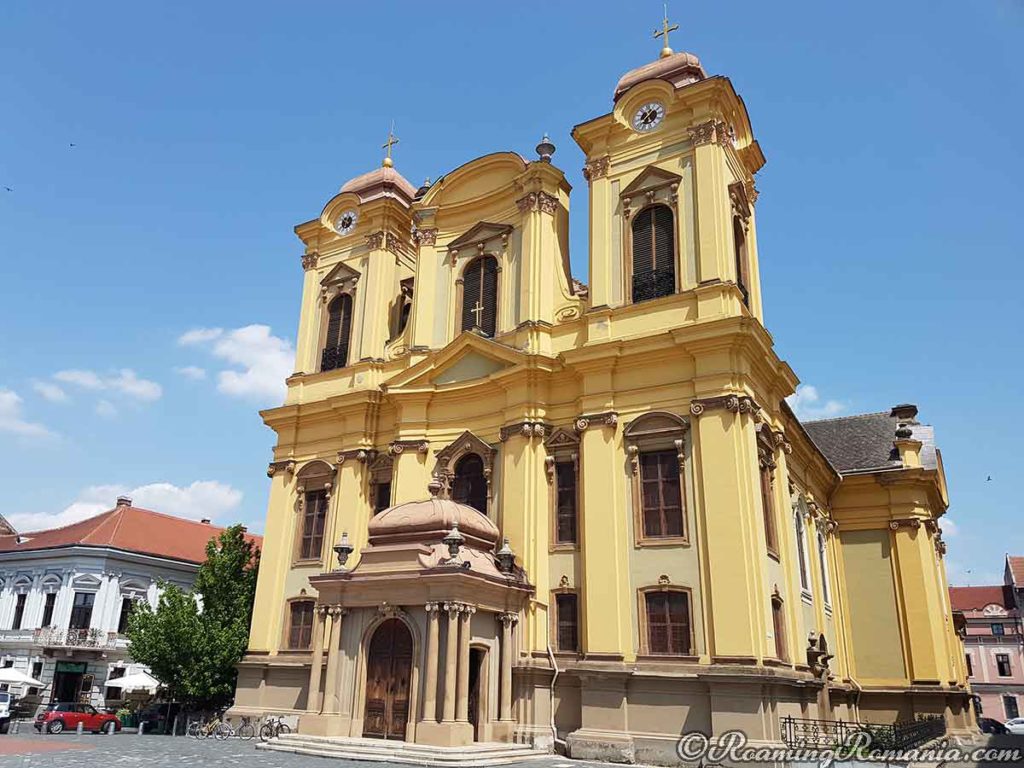
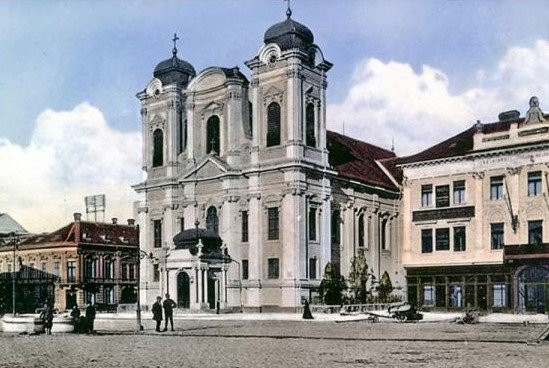

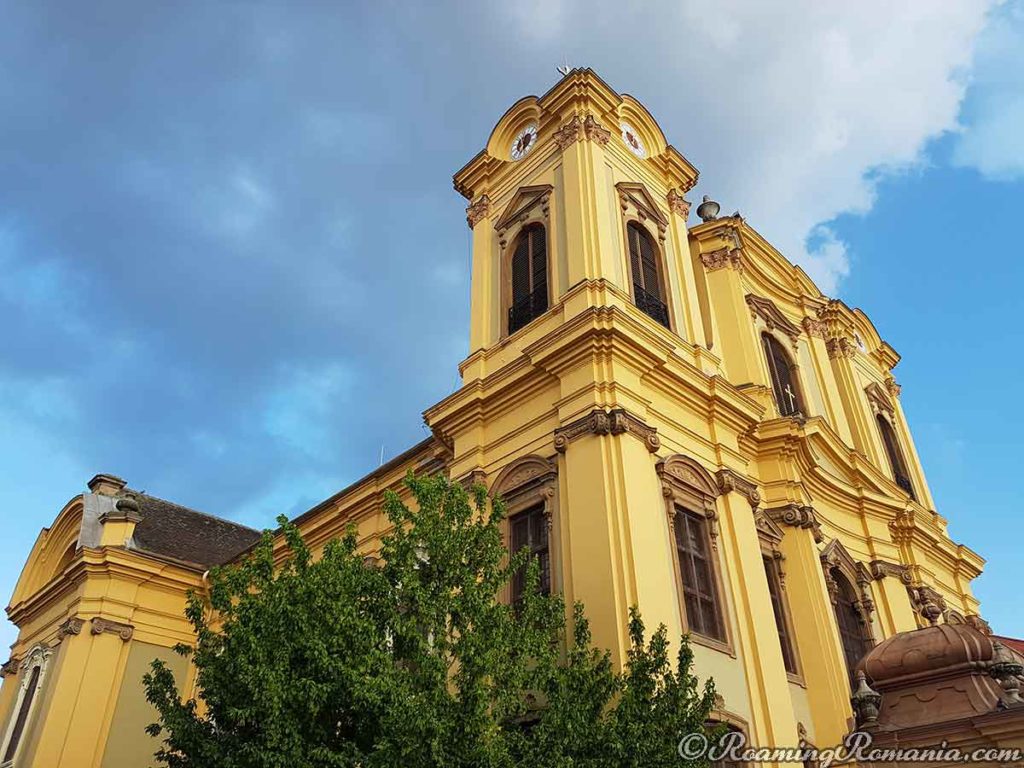
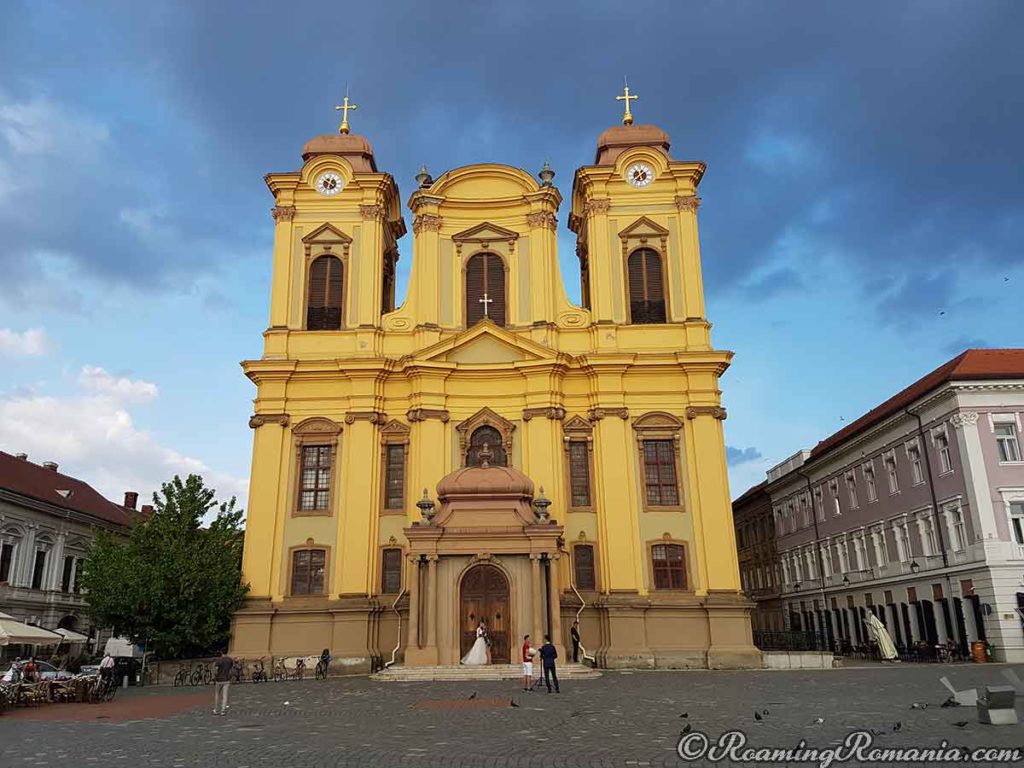
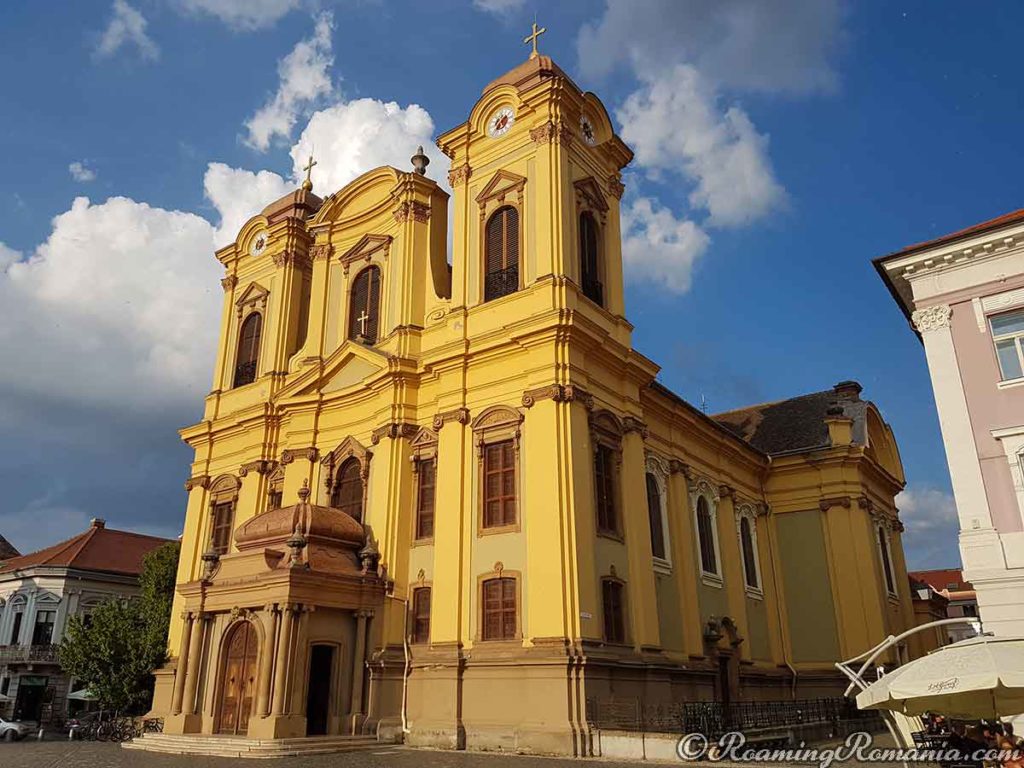
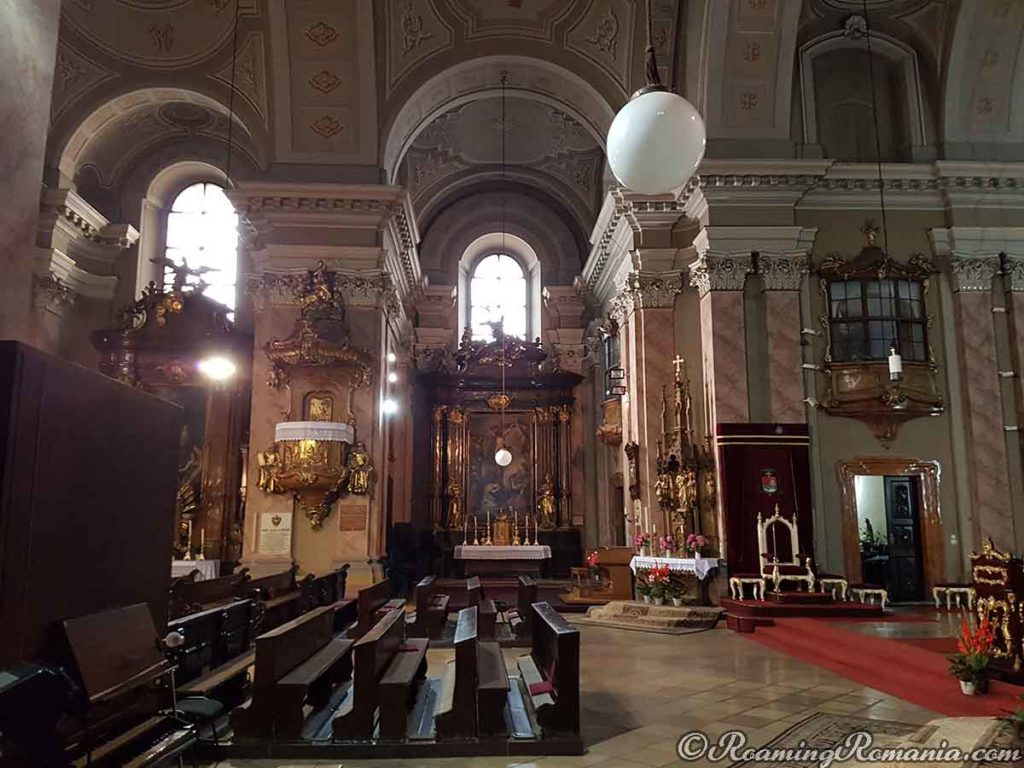
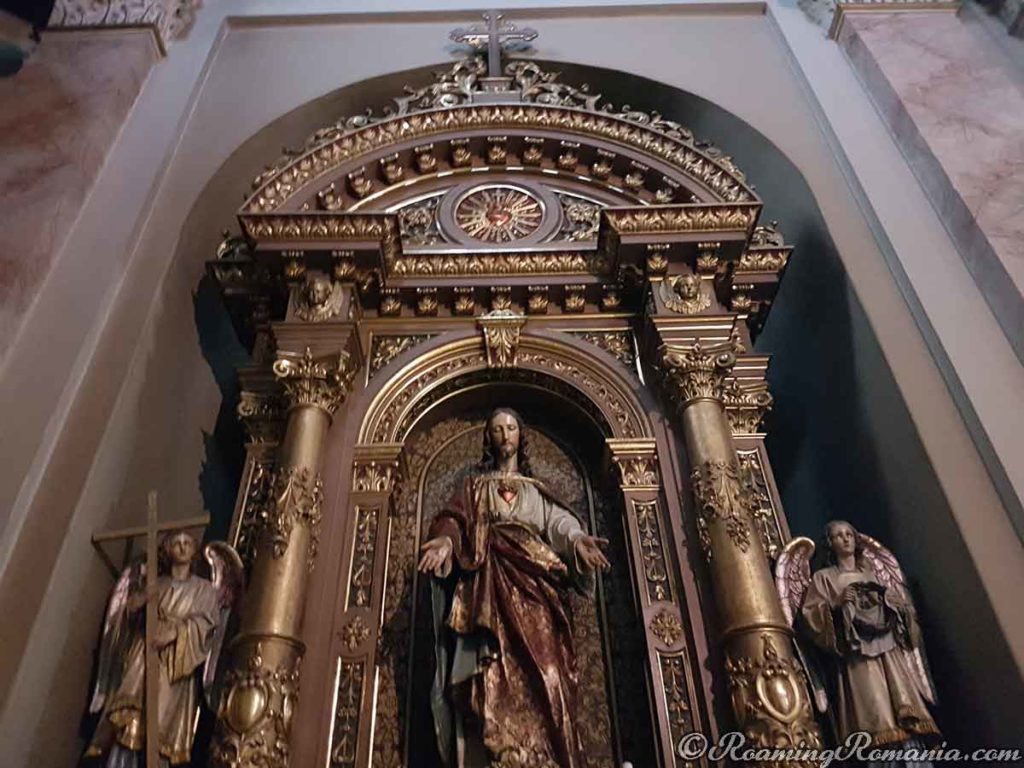
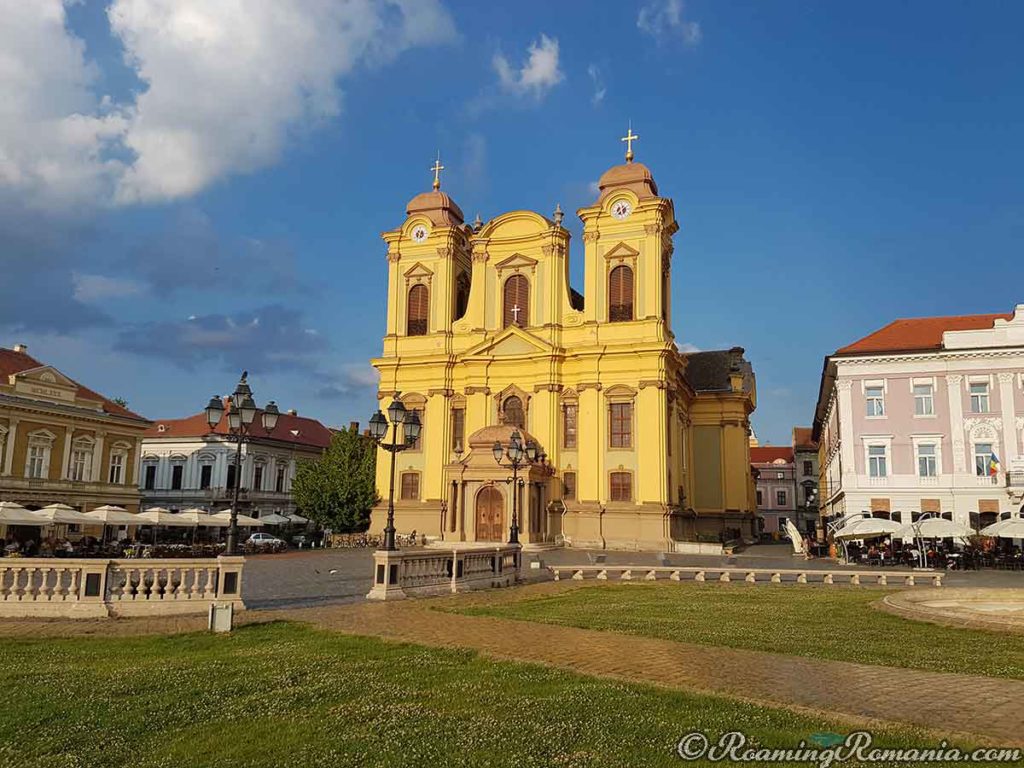
Let me know the mass timings of St George cathedral Timisoara
The Cathedral is open daily for visitation, Mon – Sun.
There is Mass on Sunday at 10:00 and at 18:00